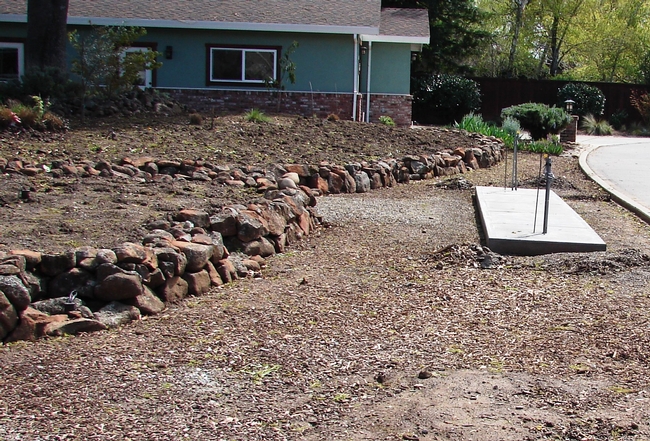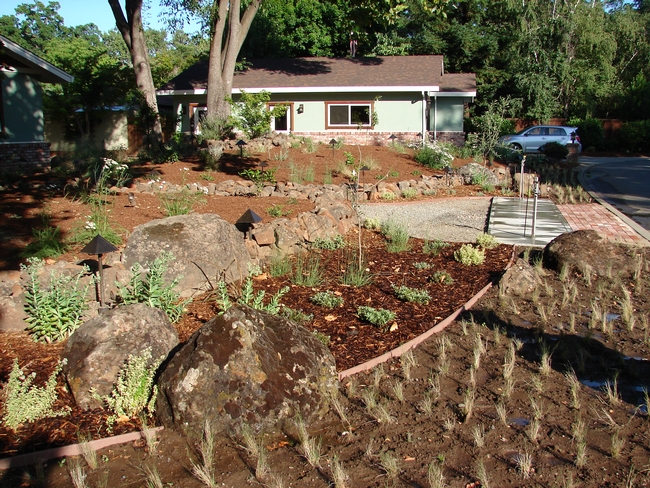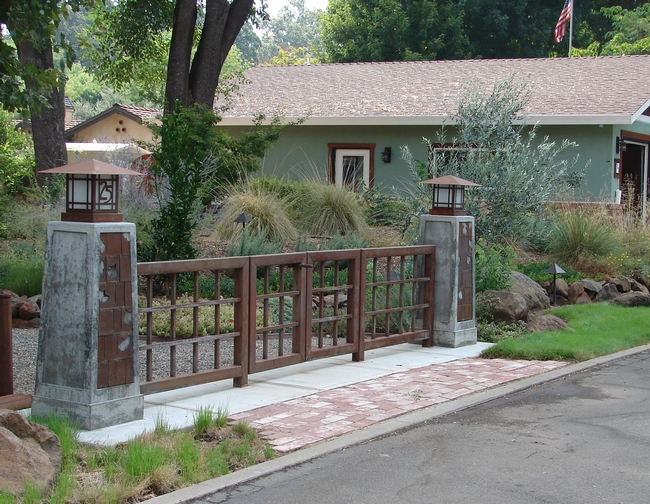Our conclusion to this series on Garden Design Basics leads you through the final steps needed to create your new landscape. Eager as you may be to get your plants into the ground, this ultimate preparation phase is as important as all of the others. To save time and money, we recommend that the last thing you do is go shopping for plants!

Timing: The time of year you plant affects plant success. Most natives, in fact most plants in general, thrive best when planted in our cool seasons, fall through early spring. Milder temperatures and (fingers crossed) rain, allow them to establish sturdy root systems that will help them tolerate the summer heat. Plants that are completely cold-hardy in our area can be planted at any time during our cool seasons. For plants that are marginally hardy, install in early fall as very cold temperatures may stress these new plants. (Bulbs, in particular iris, are an exception to the cool-season planting rule, as they do best when divided and replanted in late July or early August.)
Infrastructure: Before digging any holes for plants, complete the installation of your infrastructure, including all hardscape, irrigation lines, and drainage facilities. Build berms, install focal point(s), pour concrete, place landscape rocks; all of this comes before the living elements are added. Planting beds can be outlined with rocks at the same time as planting, if the rocks are relatively small and placing them will not disturb the plants.
Irrigation: Before planting is also the ideal time to test your newly installed or revamped irrigation system: make sure that flow and volume are correct, and that emitters for hydrozones (if included in your design) are properly sized. Resources for learning more about drip irrigation include the Butte County Master Gardener website.

- AIR: Compaction is the bane of healthy soil. It reduces space for air and water movement and creates anaerobic conditions (which in turn attract and feed detrimental bacteria, fungi, and protozoa). Try to protect your soil from heavy foot traffic and heavy equipment during hardscape installation. Lay down wide boards to distribute the weight more evenly in areas that experience a lot of foot and wheelbarrow traffic. Keep heavy equipment use to a minimal, restricted area if possible.
- FOOD: Organic compost and mulch provide nutrients to soil. Nutrients from organic mulches are leached into the soil through rains and irrigation, while organic composts are manually incorporated into the soil itself. Composted organic materials improve air and water movement, improve soil structure, reduce surface crusting and soil erosion, and increase water absorption and infiltration. Organic mulches reduce soil erosion, reduce annual weeds, and reduce evaporation and runoff. Good examples of organic mulches include leaves and the various sizes of wood chips.
- WATER: The texture of soil directly affects its ability to hold or shed water. Soils with a high proportion of clay drain poorly, creating waterlogged environments low in oxygen. This is hard on the roots of most plants and on the organisms which thrive in healthy soil. Soils that are too sandy allow water to leach nutrients below the root zone and have a low water holding capacity, allowing moisture stress to occur more quickly. Amending either soil type with compost can help: adding compost to clay soil increases aeration and water infiltration; adding compost to sandy soil increases its water and nutrient holding capacity.
- PROTECTION FROM ABUSE: Compaction is not the only form of soil misuse. Erosion is a culprit as well: overwatering bare soil can cause runoff and reduce the nutrients in the soil. Applying mulches and/or incorporating groundcover plants can protect soil from eroding on a slope. Create mini-berms around plants on slopes, and add terraces to steep yards during the hardscape phase of garden preparation. Neglect is another form of abuse! Check plants on a regular basis to catch pest infestations or signs of stress. Irrigation systems need regular check-ups too, as small rodents and problems with water pressure can wreak havoc on water lines and emitters.

Now you can go shopping. Happy Gardening!
This series of Real Dirt articles summarizes the presentation Butte County Master Gardener Eve Werner created for the Butte County Master Gardeners Spring 2017 Workshop Series. Please watch our website for our Fall 2017 Workshop Series. For more information about the Butte County Master Gardener Program, please visit http://ucanr.edu/sites/bcmg/